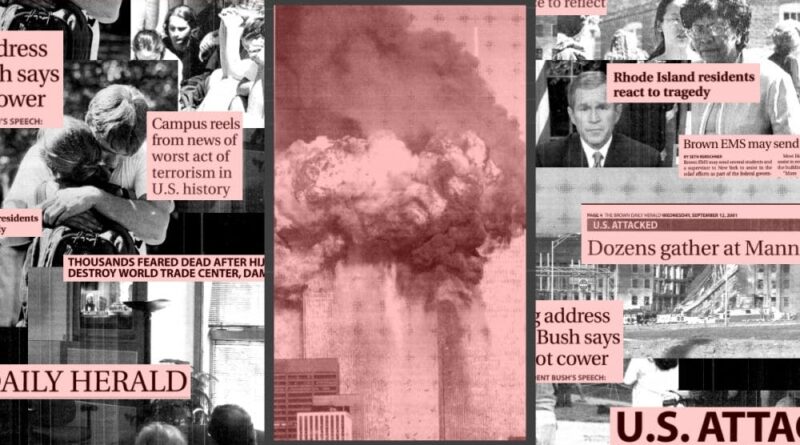Reflecting on the Journalistic Challenges During 9/11
Published four years back, this piece remains relevant today amidst rising political unrest and constant challenges faced by news media. As we stepped into a new century, print reigned supreme. Weekends were marked by hectic preparations for the latest issue, with the workload reaching its peak by Friday, only to ease up as the new week began. Concerns about a stray pilot crashing into a prominent East Coast building kept me anxious; being the assistant bureau chief in Washington, it was also part of my job to keep things running smoothly.
Everyone who tuned into The Today Show witnessed with disbelief as the second plane crashed into the South Tower. Even with two decades of journalistic experience under my belt, it took me a moment to understand that the unfolding horror, caught on countless cameras in Lower Manhattan, was not just an accident but a deliberate attack, thereby turning the place into a massive crime scene. The 48 hours that ensued were filled with high-energy work, fuelled by caffeine, punctuated by bouts of worry and despair, focused activity and periods of mind-numbing shock.
The team at Time dealt with the pressure commendably, putting together a special issue of the print magazine, ahead of time and dedicated solely to this one earth-shattering story. This accomplishment won us the 2002 National Magazine Award for a single-topic issue. Our cover featured a chilling photograph of the burning towers, without any headline. The events of 9/11 touched everyone, in different ways, irrespective of their location or identity.
Downtown D.C., my place of residence was thick with smoke from the Pentagon, minus the terrifying sights of people falling, clouds of dust and ash, and scattered paper debris. My life was not threatened, yet this day serves as a point of reference to shape our understanding of the changing landscape of news reporting, technology, and America’s stance in the world. Despite my frustrations with mainstream media’s superficiality and its focus on polls over policymaking, leading to a skewed narrative, I find it irksome when reputable news sources are unfairly branded as ‘fake’ by the former president and his followers.
Clear in my memory is our determination to get our facts right amidst the turmoil. We suspected al-Qaeda to be the culprits behind 9/11, although at that moment, certainty was elusive. They had not accepted responsibility, and it took significant effort to decipher the lives of the foreign nationals on those ill-fated flights. Al-Qaeda’s involvement in various bombings interspersed throughout the last decade and early 2000s meant we had to tread carefully, ensuring we didn’t jump to any premature conclusions.
Journalism, at its core, involves interacting with a diverse cross-section of people to assemble a consistent, authentic narrative within the constraints of time. Criticisms towards journalism are often warranted, but baseless defamatory accusations of false reporting are a misrepresentation. As I look back at 9/11, I remember it as a series of disjointed events; my son being collected from preschool, the brief joy when we managed to confirm a few facts. Relatively few of us owned cell phones then, and even those seldom worked reliably.
Our office manager at Time managed to maintain a single landline, separate from the desk phone system, which had its share of issues. This line served as our lifeline to New York. Reflecting on this day serves as a solemn reminder as well as a warning. The weeks that followed witnessed the formation of the Department of Homeland Security, an initiative that was widely accepted irrespective of political affiliations. Today, it appears to be an unwieldy amalgamation of too many functionalities.
Even back in 2001, images had a significant impact on public perception. However, only a few security cam images captured the American Airlines plane crashing into the Pentagon, and they are rarely shown. Popular usage of camera-equipped cell phones wasn’t widespread. Most New Yorkers, forced to confront the horrifying vision of the burning towers, didn’t have a phone to act as a filter, exposing them directly to the raw tragedy.
During this time, the public yearned for strong leadership and heroism, embodied in figures like Rudy Giuliani and Donald Rumsfeld, who, unfortunately, failed to maintain their credibility in the long run. If 9/11 had occurred twenty years later, it’s doubtful if the public would have united behind the president, significantly boosting his approval ratings. Would the ‘truthers’ remain a minority, or would they gain prominence, amplified by partisan media?
The appeal of quick, sensationalistic content that flourishes through web and social media is juxtaposed with the constraints of modern day journalism. It’s crucial to recognize that better journalism existed then, not because journalists were superior, but because the economic structure then supported it. Prior to the onslaught of news feeds and social media, society was more receptive to serious journalism. Even now, there’s a necessity for narratives that make sense of the world despite the relentless bombardment of information we face.
Two decades after the terrorists brought down our symbols of power, we must come to terms with our own role in eroding our institutions. As we navigate an era inundated by information, we must acknowledge that this surfeit of news can distort our understanding of reality. From the vantage point of hindsight, 9/11 offers a poignant reminder of the perils we face and underscores the value of authentic, credible journalism. It is these reflective moments that unveil the constantly changing narrative of not only journalism, technology, and politics but also of human resilience and our collective experience.

